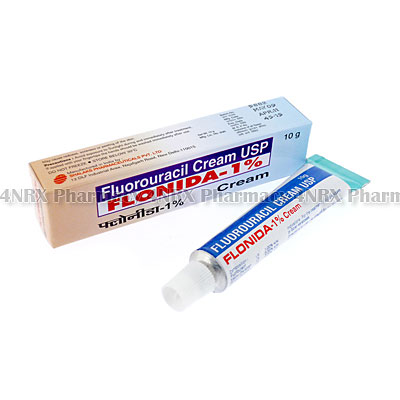 |
Home  Skin Skin  Flonida (Fluorouracil) Flonida (Fluorouracil) |
|
|||||||||
|
Flonida (Fluorouracil)
What is Flonida (Fluorouracil) used for? Flonida (Fluorouracil) is a topical cream which is effective in treating skin conditions such as actinic keartoses or solar keartoses, skin conditions which are caused by excessive exposure to sunlight. It is also used to treat a certain type of skin cancer known as superficial basal cell carcinoma. The active ingredient in this cream belongs to a class of medications known as antimetabolites, which kill the fast growing abnormal cells in the above mentioned skin conditions. How should I use Flonida (Fluorouracil)? Before applying Flonida (Fluorouracil) cream to the skin, you should ensure that the affected area is clean and dry. You may then apply a small amount of cream to the area requiring treatment. Apply just enough cream to cover it with a thin film. You should wash your hands straight away after you apply this medication, even if you have used gloves to apply it. Do not cover the area requiring treatment, unless told to do so by your physician. Continue using this medication unless you physician tells you not to. What are the side effects of Flonida (Fluorouracil)? Patients using Flonida (Fluorouracil) to treat skin conditions may notice some side effects, such as:
If any of these side effects persist, or if you notice any other more serious side effects, you should immediately consult your physician. Please Note Strictly follow all instructions provided to you by your physician or pharmacist while using Flonida (Fluorouracil). Optimum and safe dosage can differ based on the patient and the condition being treated. As this medication may be unsafe for certain patients, it is essential you always inform your physician if you are pregnant or breastfeeding, as well as if you have any allergies, other illnesses, or ongoing health conditions, and if you are taking any other form of medication, supplements, or herbal products. Immediately seek emergency medical care if you have any allergic or hypersensitive reaction. Common signs of a reaction include hives, swelling, skin rashes, chest pains, as well as trouble breathing or swallowing. 

|
|||||||||||||||||